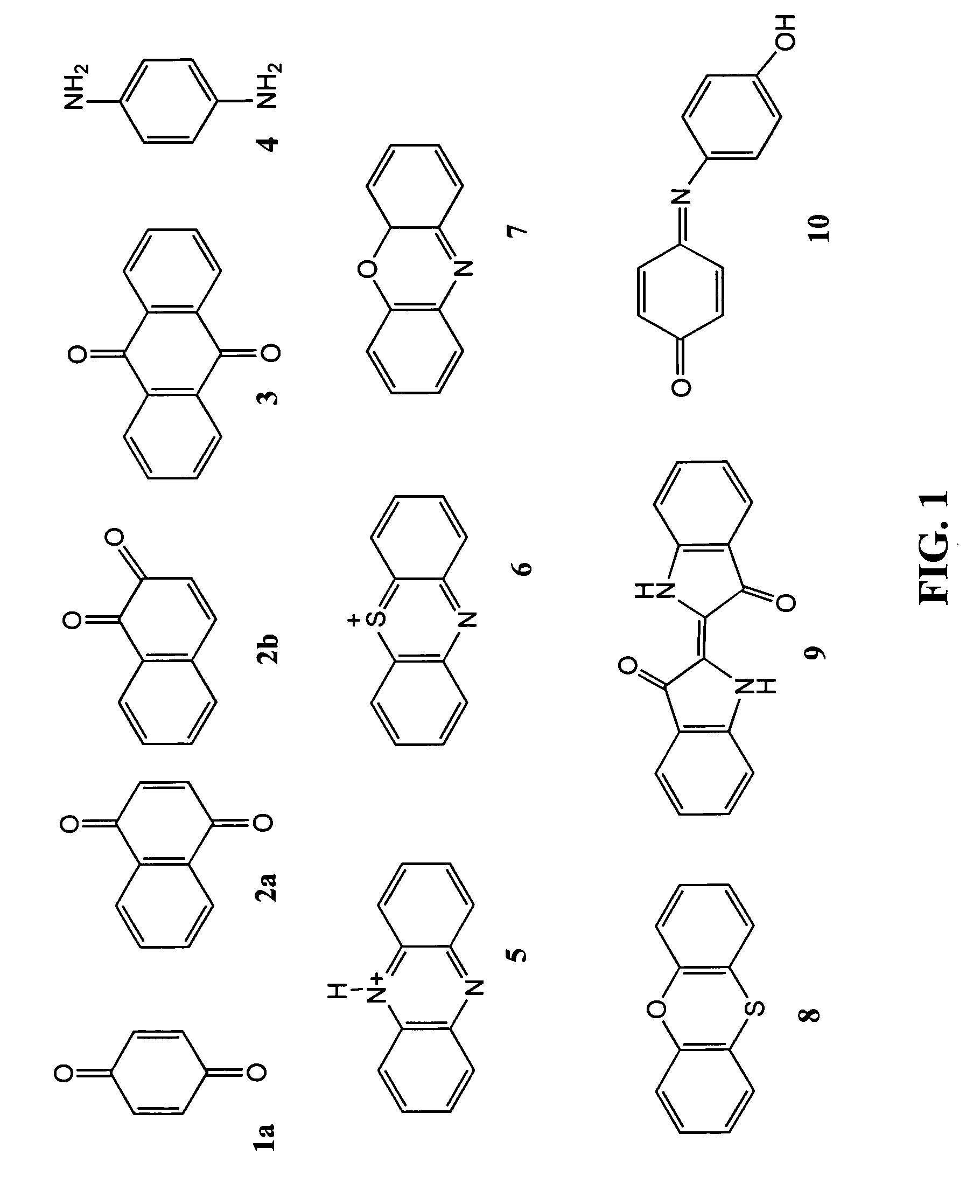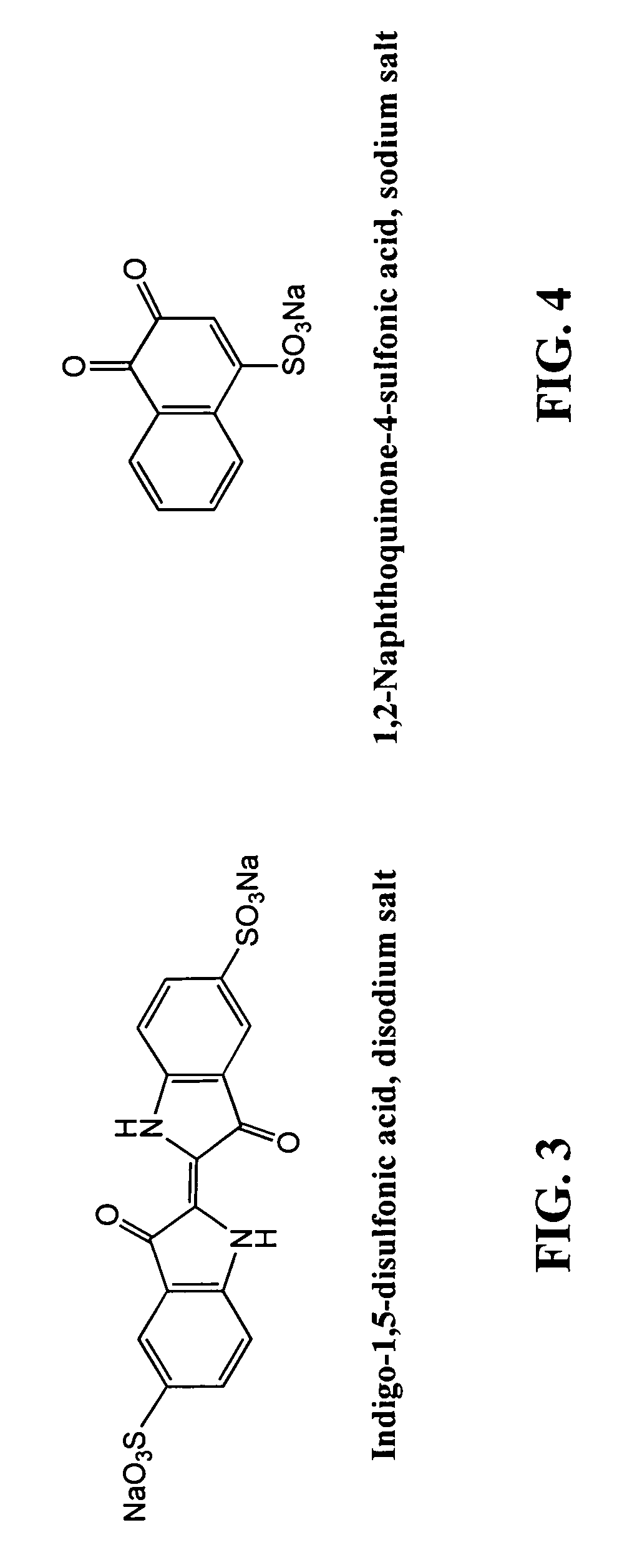Compositions and methods for tantalum CMP
a technology of compositions and methods, applied in lapping machines, other chemical processes, manufacturing tools, etc., can solve the problems of poor surface quality, low polishing rate of polishing compositions and polishing pads, and poor surface quality of conventional polishing systems and polishing methods
- Summary
- Abstract
- Description
- Claims
- Application Information
AI Technical Summary
Benefits of technology
Problems solved by technology
Method used
Image
Examples
example 1
[0063] This example demonstrates the effect of polishing additives on the rate of dissolution of platinum.
[0064] The dissolution and corrosion rates of platinum were evaluated electrochemically using a platinum rotating disk electrode (RDE) in the presence of different polishing compositions (Polishing Compositions 1A-1L and 1A′-1L′). The platinum electrode was rotating at 500 rpm and held in contact with an abrasive pad with a down force of about 90 kPa (13 psi). The metal dissolution rate was evaluated as the surface of the electrode was abraded (dissolution rate) and after abrasion (corrosion rate). The platinum activity was measured as a current density and then recalculated into a dissolution rate or corrosion rate (in A / min) using Faraday's law. When hydrogen peroxide is used as the oxidizer, the calculated rates of dissolution and corrosion include an additional current density resulting from the electrochemical activity of hydrogen peroxide at the electrode. Thus, the repor...
example 2
[0068] This example demonstrates the effect of polishing additives on the rate of dissolution of ruthenium.
[0069] The dissolution and corrosion rates of ruthenium were evaluated electrochemically using a ruthenium rotating disk electrode (0.32 cm2) in the presence of different polishing compositions (Polishing Compositions 2A-2G and 2A′-2G′). The ruthenium electrode was rotating at 500 rpm and held in contact with an abrasive pad with a down force of about 90 kPa (13 psi). The metal dissolution rate was evaluated as the surface of the electrode was abraded (dissolution rate) and after abrasion (corrosion rate). The ruthenium activity was measured as a current density and then recalculated into a dissolution or corrosion rate (in A / min) using Faraday's law. When hydrogen peroxide is used as the oxidizer, the calculated rates of dissolution and corrosion include an additional current density resulting from the electrochemical activity of hydrogen peroxide at the electrode. Thus, the ...
example 3
[0073] This example demonstrates the effect of different polishing additives on the rate of dissolution of platinum and ruthenium.
[0074] The dissolution and corrosion rates of platinum and ruthenium were evaluated electrochemically using either a platinum or ruthenium rotating disk electrode in the presence of different polishing compositions (Polishing Compositions 3A-3AA). The platinum and ruthenium metal electrodes were rotating at 500 rpm and held in contact with an abrasive pad with a down force of about 90 kPa (13 psi). The platinum and ruthenium dissolution rates were evaluated as the surface of the electrode was abraded (dissolution rate) and after abrasion (corrosion rate). The platinum and ruthenium activity was measured as a current density and then recalculated into a dissolution or corrosion rate (in Å / min) using Faraday's law. When hydrogen peroxide is used as the oxidizer, the calculated rates of dissolution and corrosion include an additional current density resulti...
PUM
| Property | Measurement | Unit |
|---|---|---|
| Fraction | aaaaa | aaaaa |
| Molar density | aaaaa | aaaaa |
| Electric potential / voltage | aaaaa | aaaaa |
Abstract
Description
Claims
Application Information
 Login to View More
Login to View More - R&D
- Intellectual Property
- Life Sciences
- Materials
- Tech Scout
- Unparalleled Data Quality
- Higher Quality Content
- 60% Fewer Hallucinations
Browse by: Latest US Patents, China's latest patents, Technical Efficacy Thesaurus, Application Domain, Technology Topic, Popular Technical Reports.
© 2025 PatSnap. All rights reserved.Legal|Privacy policy|Modern Slavery Act Transparency Statement|Sitemap|About US| Contact US: help@patsnap.com



